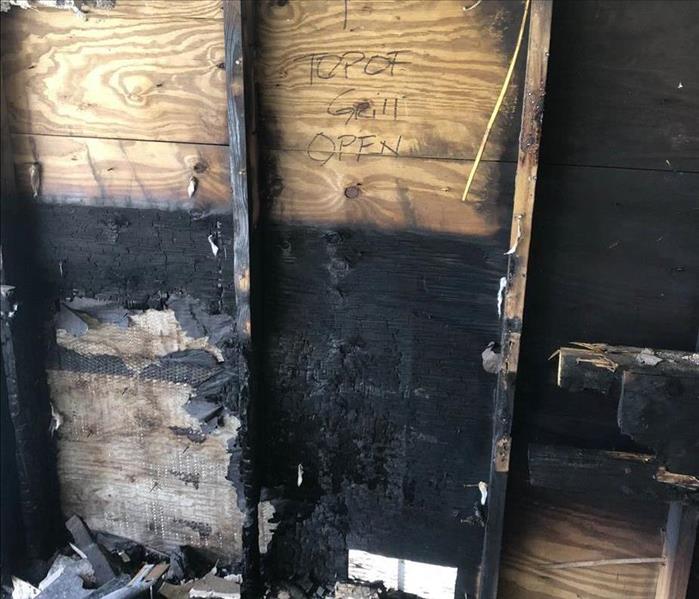A Guide to Different Types of Fire Extinguishers and Their Usage
12/19/2023 (Permalink)
When it comes to fire safety, having the right fire extinguisher and knowing how to use it can potentially make a life-saving difference. In this blog, we will dive into the various types of fire extinguishers available and provide essential information on their purpose, appropriate usage, and the different types of fires they can effectively combat. By understanding these key elements, you will be better equipped to protect yourself, your loved ones, and your property in the event of a fire emergency.
Class A Fire Extinguishers
Suitable for fires involving ordinary combustible materials such as wood, cloth, paper, and plastics.
How to use: Aim the nozzle at the base of the fire, sweep from side to side, and maintain distance to prevent the flames from reigniting.
Class B Fire Extinguishers
Designed for fires fueled by flammable liquids like gasoline, oil, paints, and solvents.
How to use: Aim at the base of the flames, squeeze the handle, and sweep the nozzle from side to side until the fire is extinguished.
Class C Fire Extinguishers
Intended for fires caused by energized electrical equipment such as appliances, wiring, and circuit breakers.
How to use: Similar to Class B extinguishers, aim at the base of the fire and sweep back and forth until the flames are out.
Class D Fire Extinguishers
Specifically designed for fires involving combustible metals like magnesium, titanium, and potassium.
How to use: These extinguishers are typically used by trained professionals and should not be handled by untrained individuals. Contact emergency services and let them handle Class D fires.
Class K Fire Extinguishers
Primarily used in commercial kitchens to combat fires fueled by cooking oils, greases, and fats.
How to use: Aim the nozzle towards the base of the fire, and in a controlled manner, sweep back and forth until the flames are extinguished. Do not use water or standard extinguishers on kitchen fires.
Water Mist Fire Extinguishers
Versatile extinguishers are suitable for Class A, B, and C fires, as well as fires involving electrical equipment.
How to use: Squeeze the handle and spray the water mist at the base of the flames, moving the nozzle from side to side until the fire is fully suppressed.
Carbon Dioxide (CO2) Fire Extinguishers
Effective for Class B and Class C fires, as well as fires involving electrical equipment.
How to use: Aim at the base of the fire, gently sweep back and forth to suffocate the flames and be cautious of the extremely cold discharge.
Fire safety is a critical aspect of protecting ourselves and our property. Understanding the different types of fire extinguishers and their appropriate usage is essential for effective fire prevention and response. Remember to identify the type of fire correctly and select the appropriate fire extinguisher for that specific class. Regularly inspect your extinguishers, train yourself and your family on how to use them, and always prioritize personal safety when dealing with fires. By being well-informed and prepared, you can play a crucial role in minimizing the impact of a fire emergency and safeguarding the well-being of those around you.






 24/7 Emergency Service
24/7 Emergency Service
